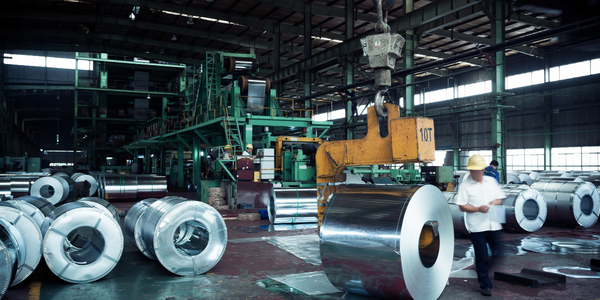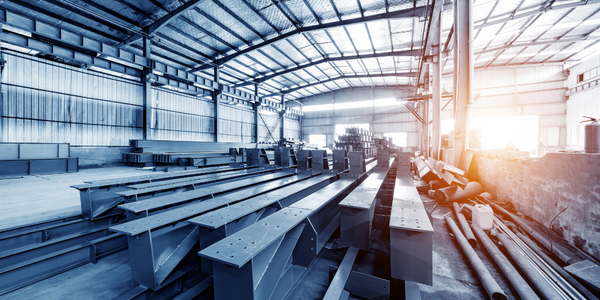Case Study Supply Chain Risk Management at Swiss Steel
公司规模
Large Corporate
地区
- Europe
国家
- Switzerland
产品
- Supply Risk Network
- MunichRE NATHAN Risk Suite
技术栈
- Automated Risk Management Solution
- Linked Databases
实施规模
- Enterprise-wide Deployment
影响指标
- Cost Savings
- Customer Satisfaction
- Productivity Improvements
- Brand Awareness
技术
- 分析与建模 - 预测分析
适用行业
- 金属
适用功能
- 采购
- 物流运输
- 质量保证
用例
- 供应链可见性(SCV)
- 预测性维护
- 实时定位系统 (RTLS)
服务
- 系统集成
- 数据科学服务
- 培训
关于客户
Swiss Steel is a leading company in the steel manufacturing industry, known for its high-quality products and extensive global supply chain. The company has been proactive in addressing supply chain risks to ensure uninterrupted operations. With a focus on innovation and quality, Swiss Steel has implemented advanced risk management solutions to maintain its competitive edge in the market. The company operates on a global scale, dealing with numerous suppliers, subcontractors, and logistics hubs, making risk management a critical aspect of its operations.
挑战
Swiss Steel faced significant challenges in ensuring supply security due to various risks in the supply chain. Traditional methods of monitoring financial stability and country risk ratings were insufficient. The company needed a comprehensive approach to monitor all potential risks, including supplier, location, and country risks. Information procurement was cumbersome and time-intensive, leading to an unsatisfactory feeling concerning supply security.
解决方案
Swiss Steel implemented an automated, multidimensional risk management solution called 'Supply Risk Network' from riskmethods. This solution covers the entire supply chain, performing 'n-tier' modeling for all risk objects, including suppliers, subcontractors, locations, and countries. The system monitors various types of risks, such as compliance, quality, price fluctuations, natural disasters, strikes, and political risks. It generates information from numerous linked databases and searches over 300,000 online sources, offering a high degree of automation. The tool functions as both an early warning system and a means to assess latent risks, enabling Swiss Steel to take preventive actions and respond to crises in real-time.
运营影响
数量效益

Case Study missing?
Start adding your own!
Register with your work email and create a new case study profile for your business.
相关案例.

Case Study
Goldcorp: Internet of Things Enables the Mine of the Future
Goldcorp is committed to responsible mining practices and maintaining maximum safety for its workers. At the same time, the firm is constantly exploring ways to improve the efficiency of its operations, extend the life of its assets, and control costs. Goldcorp needed technology that can maximize production efficiency by tracking all mining operations, keep employees safe with remote operations and monitoring of hazardous work areas and control production costs through better asset and site management.

Case Study
KSP Steel Decentralized Control Room
While on-site in Pavlodar, Kazakhstan, the DAQRI team of Business Development and Solutions Architecture personnel worked closely with KSP Steel’s production leadership to understand the steel production process, operational challenges, and worker pain points.

Case Study
Bluescope Steel on Path to Digitally Transform Operations and IT
Increasing competition and fluctuations in the construction market prompted BlueScope Steel to look toward digital transformation of its four businesses, including modern core applications and IT infrastructure. BlueScope needed to modernize its infrastructure and adopt new technologies to improve operations and supply chain efficiency while maintaining and updating an aging application portfolio.

Case Study
RobotStudio Case Study: Benteler Automobiltechnik
Benteler has a small pipe business area for which they produce fuel lines and coolant lines made of aluminum for Porsche and other car manufacturers. One of the problems in production was that when Benteler added new products, production had too much downtime.

Case Study
Continuous Casting Machines in a Steel Factory
With a very broad range of applications, steel is an important material and has been developed into the most extensive alloy in the engineering world. Since delivering high quality is absolutely crucial for steel plants, ensuring maximum productivity and the best quality production are the keys to competitiveness in the steel industry. Additionally, working conditions in steel factories are not suitable for workers to stay in for long periods of time, so manufactures usually adopt various machines to complete the steel production processes. However, the precision of these machines is often overestimated and the lack of flexibility also makes supervisors unable to adjust operating procedures. A renowned steel factory in Asia planned to improve its Distributed Control System (DCS) of furnaces as well as addressing the problem of insufficient accuracy. However, most well-known international equipment suppliers can not provide a satisfactory solution and local maintenance because the project needed new technologies to more accurately control equipment operations. By implementing Advantech’s automated monitoring and control solution, steel factories can not only improve the manufacturing processes but can also allow users to add additional functions to the existing system so as to make sure the operation runs at high efficiency.

Case Study
Automated Predicitive Analytics For Steel/Metals Industry
Asset to be monitored: Wire Compactor that produces Steel RebarCustomer Faced The Following Challenges:Dependent upon machine uptime.Pressure cylinders within the compactor fail to control compression and speed causing problems in binding the coil.Equipment failure occurs in the final stage of production causing the entire line to stop, can you say bottleneck?Critical asset unequipped with sensors to produce data.


